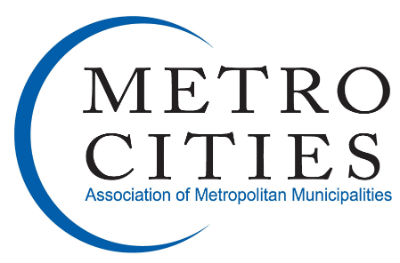In This Issue:
- TAC Considers Allocation of $20 Million to Metropolitan Council
- Met Council Reviews TBRA SEED Redevelopment Category
- Metropolitan Council Reviews 2020 Census Data
TAC Considers Allocation of $20 Million to Metropolitan Council
The Metropolitan Council was allocated a portion of funds sent to MnDOT from the 2020 Coronavirus Response and Relief Supplemental Appropriation Act (CRRSAA). $162 million was allocated to MnDOT and $20 million of that amount is being directed to the Metropolitan Council. The Technical Advisory Committee (TAC) to the Transportation Advisory Board heard and discussed these funds and potential uses. Action on this allocation will begin later this month and into November.
The U.S. Department of Transportation has identified several approved uses for CRRSAA funds. They include:
- Transportation revenue losses incurred because of the pandemic.
- Funding new projects from the 2020 funding cycle.
- Bolstering funding for existing projects.
Council staff walked through the three options. Option 1, that addresses revenue losses, allocates the $20 million using the state-aid formula. Click HERE to view the options and associated funding spreadsheets. The spreadsheets include funding amounts for each county and eligible city in the region and identify which projects would receive a portion of funds for the second and third options listed above. When discussed in the TAC Funding & Programming Committee in September, members expressed support for Option 1 because it addresses the intent of CRRSAA as a pandemic relief bill and gets money to local agencies quickly. Click HERE for more details on this information item from Wednesday’s TAC meeting.
Contact Mike Lund at [email protected] or 651-215-4003 with any questions.
Met Council Reviews TBRA SEED Redevelopment Category
The Community Development Committee reviewed the Livable Communities TBRA SEED program at Monday’s meeting. SEED, which stands for Seeding Equitable Environmental Development, had an original purpose to create new jobs by spurring redevelopment within census tracts identified as areas of concentrated poverty. A unique program element allowed grant funds to be awarded on sites with potential for redevelopment rather than an identified redevelopment project. (Sites with a redevelopment project were encouraged to apply to one of the other existing TBRA grant categories.)
Staff provided an update to Councilmembers, explaining the Council has awarded 24 grants totaling $1.6M since 2015. Awards have been spent on environmental site investigations and asbestos abatement. Other than one grant award to Hopkins, all other grants have been awarded to sites in Minneapolis and Saint Paul. No other eligible city has requested a grant. Nearly 70% of the funding awarded has been spent to date.
Following review of this geographic interest and award data, Council staff reached out to cities, counties, and community development officials for suggested program changes. The feedback included comments on local development needs and priorities as well as suggested administrative changes. This included feedback that remediation without a redevelopment project has not been a high priority or frequent need for most of the cities with eligible target areas. A summary of those comments can be found here.
The Council continues to seek feedback on how to target the funding program moving forward. Cities may provide feedback to [email protected] and [email protected]. Program changes and funding amounts will be finalized and included in February 2022’s adoption of the LCA Fund Distribution Plan.
Metropolitan Council Reviews 2020 Census Data
Research staff provided a detailed review of 2020 Census data to the Metropolitan Council this week.
One of the Council’s early efforts of the decennial census was engaging local partners to ensure an accurate count. This led to an increase in the net addition of 12,000 addresses to the Census database. Minnesota’s 74% self-response rate was the highest rate in the country. Those who did not self-respond were counted via field worker interviews, administrative record data mining, and imputation.
Minnesota’s responses to the census ensured the state retained eight congressional districts, with 713,312 residents per district.
The seven-county metropolitan region has the majority (55%) of the state’s residents and contained 78% of the state's growth from 2010-2020. Most of that growth came from BIPOC people (Black, Indigenous, and people of color), and most cities saw increases in their non-white populations.
69% of the region is white; 10% is Black, non-Latino; 8% is Asian/Pacific Islander, non-Latino; 7% is Hispanic/Latino; 5% is other/multiracial, non-Latino; and 1% is American Indian, non-Latino. More information, including detailed maps, can be found on the Council’s website.
